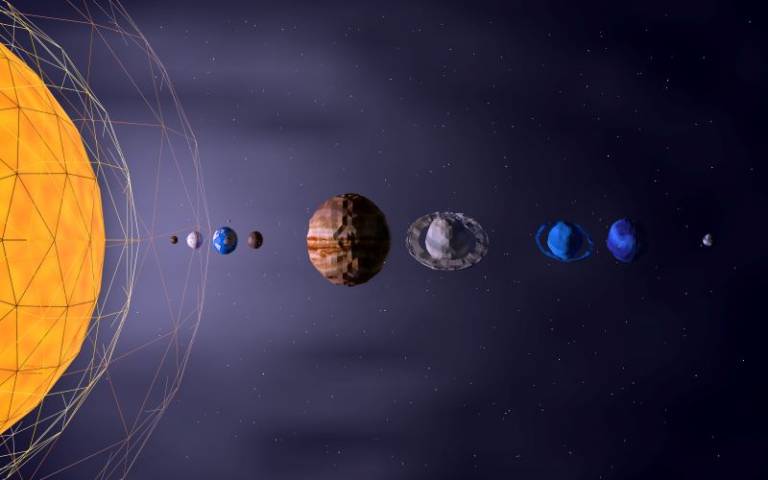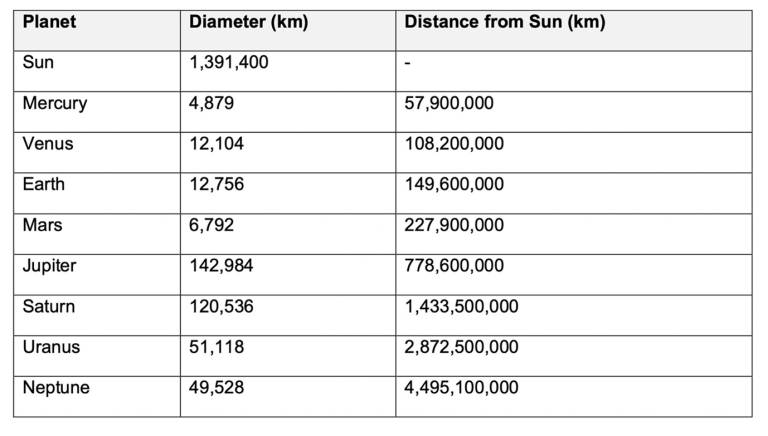Why is Earth the third planet, shouldn't it be the first?
Great question.

27 April 2022
The Earth is sometimes called “the third planet” because it is the third planet in distance away from the Sun. As you can see in the image above, Mercury is closest to the Sun, followed by Venus, then Earth and then Mars. These are the rocky planets, sometimes called terrestrial planets after the Latin word terra meaning Earth. The Earth is the largest rocky planet (as opposed to the much larger “gas giants” like Jupiter, Saturn, Uranus and Neptune) and the title of the third planet was popularised in a 1996 TV show called Third Rock from the Sun.
All eight planets in our Solar System orbit the Sun at different distances (see table below). There are similar distances between the first four planets (about 50,000 km) and then there is a big gap before the gas giants, which are much, much further away.

In fact, the distances in the solar system are so vast that it takes time for light from the Sun to reach the planets – 8.5 minutes for us, so the Sun that you see in our sky is the Sun as it was 8.5 minutes ago. Light takes 44.2 minutes to reach Jupiter, and 4.3 hours to reach Neptune!
There is a unit of measurement to describe such enormous distances. This is the Astronomical Unit (AU). One AU is the Earth-Sun distance, so is equal to 149,600,000 km – that’s a distance equivalent to going around the Earth’s equator 3733 times! So Mercury, for example, is about a third of an AU away from the Sun, Jupiter is just over 5 AU away from the Sun and Neptune is just over 30 AU away from the Sun.
Being on Earth at this particular distance from the Sun is very special indeed. Our place in the solar system is sometimes called the Goldilocks Zone or the Habitable Zone. This is because it is at this distance from the Sun that the temperature on the Earth’s surface allows for the existence of flowing water and conditions favourable to the existence of life – as Goldilocks says, not too hot (Venus), not too cold (Mars), but just right (Earth).
However, climate change means that the Earth is getting hotter and hotter – the temperature change may be only a few degrees, but the consequences of even a small increase in temperature may be catastrophic for humans.
 Close
Close


